About Us
綠色消費者基金會是1990年發起地球日,和1992年台灣環保團體參加地球高峰會後決定成立的基金會,推動綠色消費運動。天地和氣股份有限公司是因綠色消費者基金會倡議環安、農安、食安而設立的營利機構,開發「努力小農 App」,並從事國際自願性減碳專案,幫助小農取得國際碳權認證,實踐永續發展目標。
Google Translate
網頁由Google自動翻譯內容不準確之處請多包涵
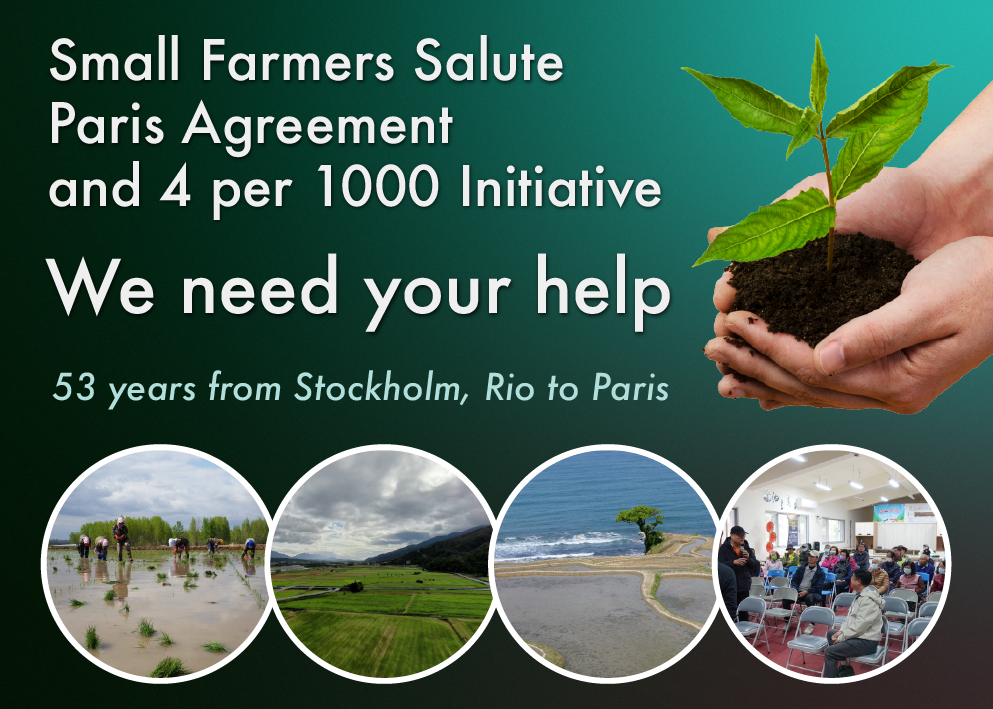
It is an honour to be in Paris on June 5, 2025, for a two-day conference of the "Gold Standard for Global Goals (Gold Standard, or GS)" to discuss the future of voluntary carbon reduction projects with representatives from governments and the private sector around the globe. We represent a group of small farmers at this conference to learn and share how small-scale farmers impacted by the climate crisis are contributing to mitigating the effects of global warming.
In addition to geopolitical issues, military conflicts, international trade disputes, and various disasters, there is growing concern about the future of the world.
June 5 is the first World Environment and Sustainability Conference held by the United Nations in Stockholm in 1972, which was designated as "World Environment Day" and published "Our Common Future – Brundtland Commission Report", unveiling the international sustainability agenda, 53 years ago; When the Earth Summit was held in Rio de Janero, Brazil, in early June 1992, world leaders signed Agenda 21 (now the Sustainable Development Goals (SDGs)), the United Nations Framework Convention on Climate Change (UNFCCC), Forest Principles, and the Convention on Biological Diversity (CBD).
As non-binding documents, countries are not fully committed to the $100 billion annual climate finance target, making it unattainable for supporting third world countries.
The climate awakening and pledge of small farmers
However, few small groups of small farmers in Asia have launched a climate awakening movement after experiencing the catastrophe of climate change, and we can see the crisis and turning point of voluntary carbon reduction by agricultural small farmers.
Since the beginning of the COVID-19 pandemic in 2020, in order to develop a mobile app to help small farmers with production and sales resumes, we began to intensively interview small farmers across Taiwan, and found that many small farmers who are serious about farming mentioned about the climate change they have observed in the past 10 years, which has seriously affected their livelihoods and even to the point of giving up farming.
This is nothing less than a visible but insensible crisis for Taiwan as boiling a frog in warm water, because in 1990 Taiwan was still a grain exporter, but in 2000 joined the World Trade Organization (WTO), Taiwan sacrificed agriculture in exchange for industry growth, and now it is the world's largest exporter of semiconductors, and at the same time it has become a grain importer, and now Taiwan herself can only supply 30% of the grain, 70% must rely on imports, otherwise the Taiwanese may starve.
Taiwan's agriculture, peasants, and agricultural products are a microcosm of the third world's transition from developing to developed countries, just like a peasant who won the lottery and threw his hoe into the river, only to find that the lottery ticket was stuffed on the handle of the hoe, and he lost the lottery ticket and also lost the hoe.
In 2022, when we wanted to use the "MiHuMiSang1 App" to do something for small farmers, we found that when UNFCCT COP 21 was held in Paris in 2015, the French Minister of Agriculture proposed the "4 Per Thousand Initiative", which advocated that soil is the largest carbon pool on the earth, and that soil organic carbon emissions will be emitted into the atmosphere by agricultural methods in the past, becoming the most significant source of greenhouse gases. It can balance the carbon dioxide emissions of other human actions, and the Food and Agriculture Organization of the United Nations (FAO) has recognized this as a good way to solve the climate and food crises at the same time.
When we found the gold standard Soil Organic Carbon Framework Methodology that could turn the 4 out of 1,000 initiative into a system of climate and sustainability certification and voluntary carbon trading that is economically incentivizing for farmers, we told the story to farmers, and they were skeptical, because even experts and scholars were full of question marks about the initiative, but a small percentage of small farmers were willing to try it with us.
It's time for industries and traders to help farmers and agriculture for our common future.
Each small farmer has a story to tell
The whole island of Taiwan (GDID 18118 Listed)
Qiu Chuiquan, a small farmer in Changliang Village, Yuli Town, Hualien County, took the lead in joining the smallholder carbon farming project, and also invited Chen Wenhuali and community farmers to join in, "Anyway, we have noting to loose now!" Huang Zhengxian, a small farmer in Changliang Village, Yuli Township, who was the first to join, encouraged the small farmers in the same village to join in. Thanks to their participation, Taiwan's small farmers’ carbon farming project has a glimmer of life. We held a two-year radish festival together, parent-child radish pulling and roasting sweet potato activities, so that everyone can experience the on-site experience of how to sequester carbon in farmland soil.
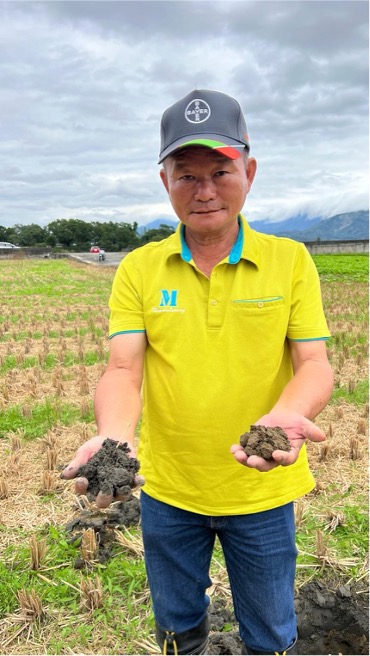
Caption: Chen Wenhua, the head of Changliang Village, was one of the first to join small farmers in growing carbon, and he believes that soil health and yields have improved in the past two years. (Photo by Jay Fang)

Caption: We held a two-year radish festival together, parent-child radish pulling and roasting sweet potato activities, so that everyone can experience the on-site experience of how to sequester carbon in farmland soil. (Photo by Jay Fang)
Small farmers are allowed to join the program free of charge, and once carbon trading is successful, they will receive a guaranteed purchase price of at least US$10 per ton. The program commits to sharing 50% of the profits with small farmers if there is a profit. This arrangement is outlined in a standard contract to encourage smallholders to participate.
Noto’s Satoyama (GSID 23202 Listed)
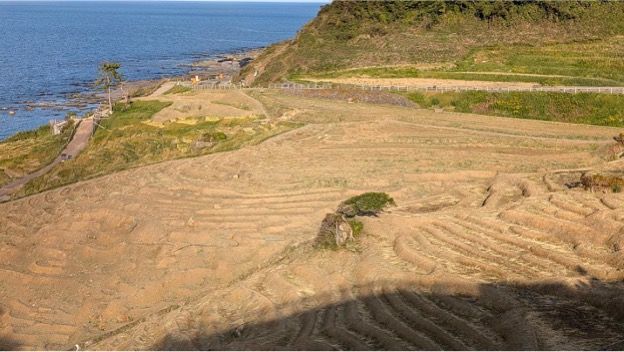
Caption: After the devastating earthquake on January 1, 2024, 85% of the terraced fields of the Senmeida Field, which is the most distinctive feature of Japan's Satoyama Initiative on the Noto Peninsula, were damaged, and local farmers worked hard to recover and joined the smallholder carbon farming initiative with the support of Tzu Chi Foundation. (Photo by Jay Fang)
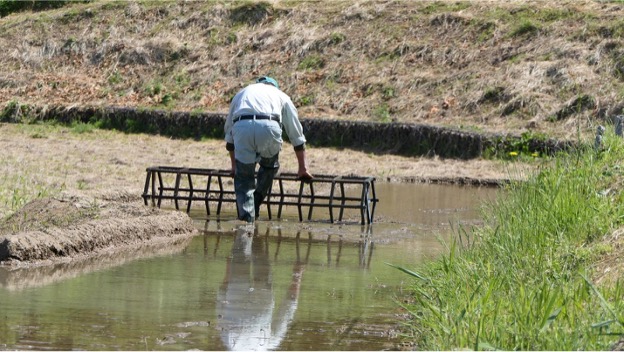
Caption: Senmaida has been cultivated on terraced rice fields for 400 years. It is recognized as both a national agricultural heritage site in Japan and a founding location of the Food and Agriculture Organization's 2011 Satoyama Initiative. (Photo by Jay Fang)
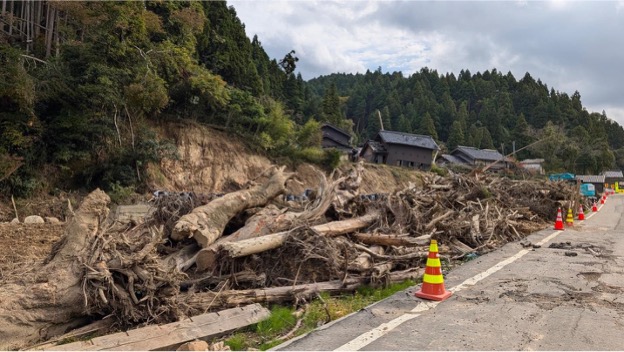
Caption: The Tomei area, also known as the Satoyama area, of Noto Town experienced heavy rainfall for three consecutive days starting on September 20, 2024, resulting in significant damage to a large section of rice terraces. (Photo by Jay Fang)

Caption: The Satoyama Initiative on the Noto Peninsula is addressing challenges posed by natural and climate-related events in agriculture and rural areas. (Photo by Jay Fang)

Caption: With the sponsorship of the Tzu Chi Foundation and ESG investment, Nengden small farmers learn about soil sampling, establish a baseline, and join small farmers to grow carbon. (Photo by Yang Jinghui)
It's not easy, because the average area of smallholder farmland in Taiwan is less than one hectare, and in the first year we found more than 100 small farmers, 159 hectares of farmland, and then in the second year (2023) it grew to more than 300 hectares, with nearly 300 small farmers joining. In early 2024, Xie Jinggui, advisor to the CEO of Tzu Chi Foundation, joined the relief effort for the Noto earthquake in Japan, and found that Noto, the birthplace of the United Nations Satoyama Initiative, has historically been a model of the sustainable integration of human farming and the natural environment.
Based on the consensus of the Earth Family, Tzu Chi Foundation is also the initiator of the "Smallholder Farming Carbon" contract we signed with Satoyama Small farmers, which is only more than 60 hectares in size to support sustainable development activities. We are honored to be part of the continuation of the spirit of the Satoyama Initiative.
China's Wuchang (Under Development)
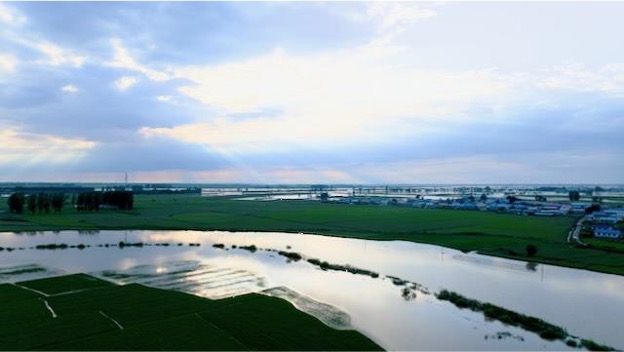
Caption: In August 2023, Wuchang, China's best rice-producing region, was hit by a once-in-a-century flood, and farmers in Yongzheng Village felt the climate crisis and joined the smallholder carbon farming campaign a year later. (Photo by Zou Zhizhong)
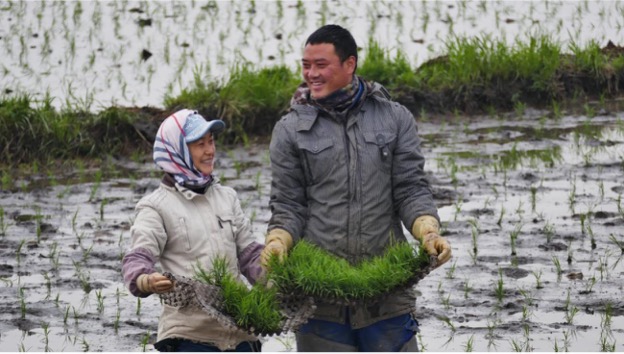
Caption: Zou Zhizhong, a small farmer in Wuchang, and his wife, Shan Hongmei, have been growing Wuchang rice by hand for many years, and they are also deeply aware of the climate crisis and encourage the village neighborhood committee to join the smallholder carbon farming action. (Photo by Jay Fang)
Coincidentally, China's best rice-producing city, Wuchang City in Harbin, Heilongjiang Province, also experienced heavy rains in 2023, and Zou Zhizhong, a farmer in Xiaowangjiatun Village, Yongzheng Village, Zhiguang Township, Wuchang City, contacted us, and he quickly discussed with his neighbors and residents' committees, and signed a contract with us in October 2024 for the "Smallholder Carbon Project" to try to do his part. Zou Zhizhong said, "Although we don't understand so much, we should try what we can do."
Taitung Chishang (Under Development)
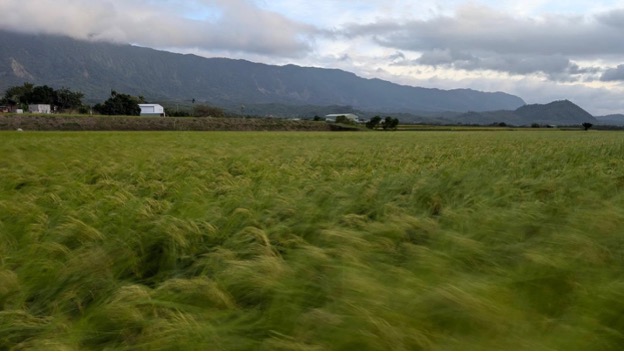
Caption: Two typhoons in October and November 2024 hit the production of rice in Chishang, which also stimulated farmers' willingness to join small farmers in carbon farming. (Photo by Jay Fang)
In addition, Wan'an Community, Chishang Township, Taitung County, which is rich in the best and most valuable rice in Taiwan, encountered an unprecedented typhoon in November after receiving Taiwan's "Gold Medal Village" in 2024, losing 30-50% of the rice yield and becoming the hardest hit area. This Hakka community has also been involved in climate action.
We only succeed by working together
After all, soil organic carbon is a new international agricultural carbon reduction method, compared with other forestry, renewable energy, and energy conservation projects, our projects are very small, and the framework methodology has many variables, is very complex, the uncertainty is high, and the risk of verification will also become greater, we are the first project developer to enter the gold standard certification system, So you have to take on more risks, responsibilities and pressures.
Fortunately, we have many small farmers who believe in us, and the support of all sectors of society, so we have come to this day and will continue to do so.
It is hoped that in this Gold Standard Paris meeting, we will review the feasibility and opportunities of the 4 per 1000 initiative and voluntary carbon reduction in the past 10 years, as well as the help of the voluntary carbon reduction mechanism in Chapter 6 of the Paris Agreement for small farmers and seek the attention and participation of international organizations and enterprises.
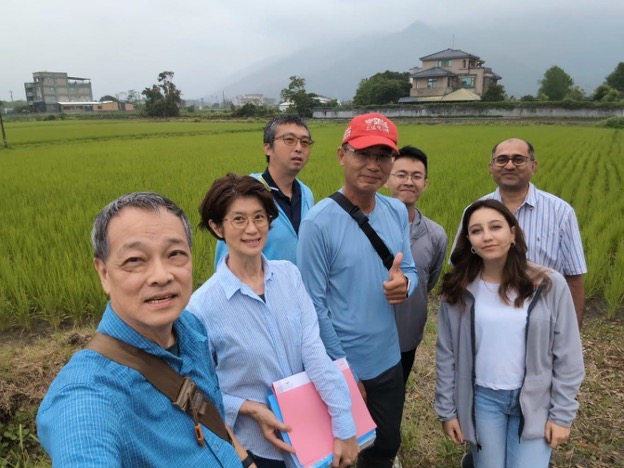
Caption: VVB Re Carbon site visit in April 2025. There are greater challenges in front of us, validation, verification, and trading. (Photo selfie by Jay Fang)
--------------------------
▶ YouTube Channel: www.youtube.com/@mihumisang6816
▶ FB Page: https://www.facebook.com/mihumisang
▶ CMmedia column: https://www.cmmedia.com.tw/home/author/159